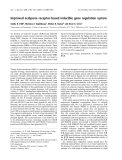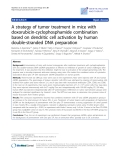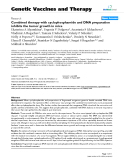
Dna preparation
-
Automated DNA sequencing is a core research tool used by almost every research biochemistry lab. It is used to determine the sequence of DNA, or the genetic code, that serves as the blueprint of life for every organism on Earth.
 78p
78p  zingzing09
zingzing09
 21-10-2012
21-10-2012
 63
63
 8
8
 Download
Download
-
To develop an ecdysone receptor (EcR)-based inducible gene regulation system, several constructs were prepared by fusing DEF domains of Choristoneura fumiferanaEcR (CfEcR),C. fumiferanaultraspiracle (CfUSP),Mus muscu-lus retinoid X receptor (MmRXR) to either GAL4 DNA binding domain (DBD) or VP16 activation domain. These constructs were tested in mammalian cells to evaluate their ability to transactivate luciferase gene placed under the control of GAL4 response elements and synthetic TATAA promoter. ...
 8p
8p  tumor12
tumor12
 20-04-2013
20-04-2013
 40
40
 3
3
 Download
Download
-
Tuyển tập các báo cáo nghiên cứu về sinh học được đăng trên tạp chí sinh học Journal of Biology đề tài: A strategy of tumor treatment in mice with doxorubicin-cyclophosphamide combination based on dendritic cell activation by human double-stranded DNA preparation
 0p
0p  toshiba20
toshiba20
 12-11-2011
12-11-2011
 45
45
 3
3
 Download
Download
-
Tuyển tập các báo cáo nghiên cứu về sinh học được đăng trên tạp chí sinh học Journal of Biology đề tài: Combined therapy with cyclophosphamide and DNA preparation inhibits the tumor growth in mice
 0p
0p  toshiba20
toshiba20
 12-11-2011
12-11-2011
 51
51
 3
3
 Download
Download
CHỦ ĐỀ BẠN MUỐN TÌM
















